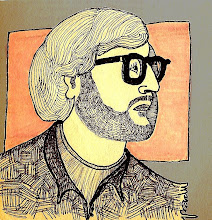lunes, 23 de junio de 2014
Gavin Bryars
Stepping into the territory of Gavin Bryars is like coming home, so familiar are the morphemes with which he composes his musical language. One of the most significant recordings in the Bryars catalogue, this disc offers a fine condensation of his spirited and nostalgic sensibilities.After the Requiem dates from 1990 and follows his Cadman Requiem of the previous year. After completing the latter, which was written for the Hilliard Ensemble in memory of Bryars’s friend Bill Cadman, Manfred Eicher suggested that Bryars spin an instrumental postlude from the requiem’s latent fibers, thus giving us the title piece of this brooding and gorgeous album. Scored for two violas, cello, and electric guitar, After the Requiem offers a distinct take on the state of mourning it so affectionately recreates. Like the gravelly strings that open the piece, the mood is raw and unbounded. Frisell’s guitar sears the darkness like the northern lights with a slow and lustrous fire, bleeding spectral life force into the evening sky. The strings gather momentum, as if to coax the guitar toward the horizon, chasing the memory of an afternoon that can no longer be recovered. Frisell plays as if he were bowing the guitar, drawing out an amplified sustenance that nourishes the vocal hunger of his accompaniment. Where the strings seem to mimic voices, the guitar mimics the strings, ad infinitum. The piece slows about midway through, burrowing even deeper into contemplative soil, at which point Frisell wrenches out some grinding low tones from the lower register of his axe. What would be but one voice lost in a power chord more forcefully played rings here with the humility of supplication. Before long the guitar lets out more substantial tones and shifts to an aerial shot of the same landscape. The earth recedes, leading into the most beautiful moment of the piece, during which the guitar drops from a soaring high note. One can hear, indeed almost taste, the meticulous care that went into this performance. The music fades, as if sending off a spirit to a realm where life continues of its own accord. The continuity between instruments here is such that there are almost no audible gaps between them. And while all the musicians play with consummate grace, Frisell is nothing short of astonishing. Despite the polished feel of the piece it was the result, as Bryars makes clear in his recording diary, of much refinement and experimentation on Frisell’s part, working closely with the composer to achieve the ideal effect.From ECM Records.
Suscribirse a:
Enviar comentarios (Atom)

















No hay comentarios:
Publicar un comentario